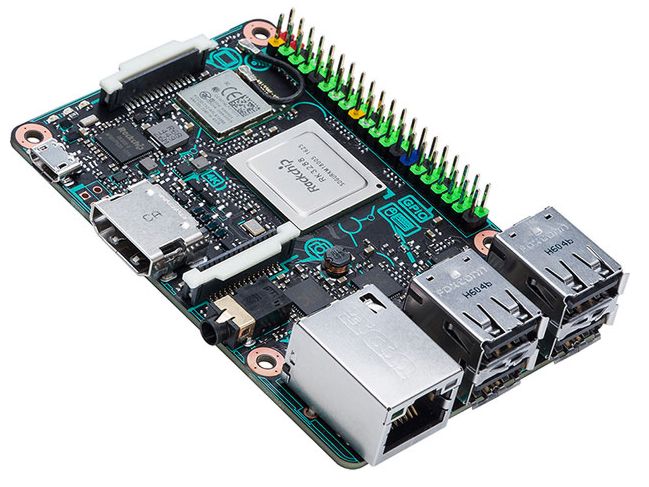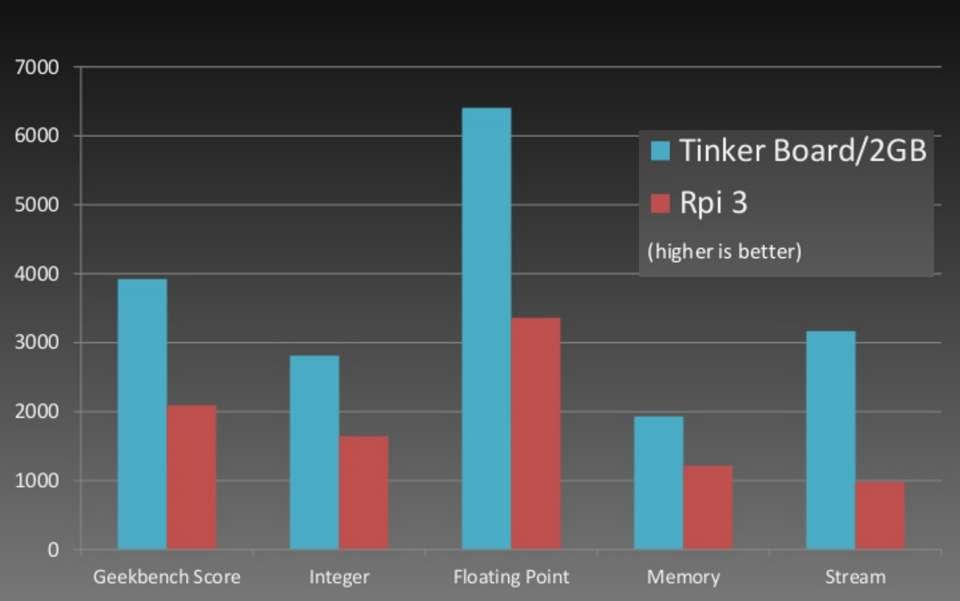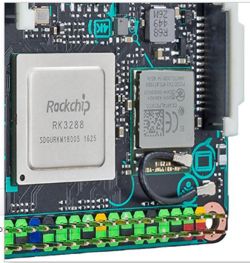| Asus Tinker Board Withdrawn From Sale |
| Written by Harry Fairhead | |||
| Thursday, 09 February 2017 | |||
|
Asus made news a few weeks ago by launching a competitor to the Raspberry Pi - the Asus Tinker Board - but it has now been withdrawn from sale. The release of the Asus Tinker Board was important because it marked the entry of a "big" hardware company better known for its motherboards and PCs into the same market at the Raspberry Pi. The Tinker Board had a better spec but it was a bit more expensive. What was strange about the launch was the half-hearted way it all seemed to be happening. You could buy a Tinker Board from UK distributor CPC Farnell, but when it arrived all you got was a short leaflet saying that you should go to the website and download the software - no mention of where the website lived. The Asus website was also devoid of any mention of the Tinker Board. When the software eventually turned up it vanished a few days later only to turn up at another location and as Asus support pages go it wasn't exactly polished - see TInker Board/2GB To find the software you have to drop down the "others" option in the OS selection box. You could say that support is barely adequate at the moment. What is more if you now try to buy a Tinker Board you are directed by Google to the original CPC page but now you get a page not found response. On contacting CPC the news is that "This item has unfortunately had to be removed from sale due to software issues." Asus haven't responded to a request for clarification. You can still find the Tinker Board on sale at other outlets but many say waiting for stock and it isn't clear if any your order will be delivered. News Flash Update from CPC "The board has not been withdrawn by ASUS. We at CPC have decided to stop selling the board for the time being as we felt that the lack of software and supporting documentation meant that we were unable to offer the level of product support that we like to offer our customers. The board is still available from other ASUS resellers, such as Currys And I am sure that in time ASUS will address the lack of supporting information for this new board."
The original news item which appeared on January 23rd follows: Asus has launched a single board computer which shares the general layout of the Raspberry Pi but comes with double the memory and a more powerful CPU, making it almost twice as fast on benchmark tests. So far the Tinker Board is only available in the UK and Europe, but is expected to go on sale in the US by the end of January. As yet ASUS hasn't publicized the product on its website, but details of its specification were revealed in a SlideShare presentation in mid-December 2016 and were confirmed when it became commercially available at a price of £55 on the cpc.farnell.com website. The product description of the ASUS 90MB0QY1-M0EAY0 Tinker Board states: The Tinker Board features a fast on-board processor to increase its operational speed. It also features Wi-Fi and Bluetooth capabilities to enhance the functionality to allow connection to a variety of wireless networks.
Since the launch 5 years ago of the Raspberry Pi there have been several other single-board computers (SBCs), notably the Intel Edison and the micro:bit. Neither of these are physically similar to the Pi and while several manufacturers have produced look-alike products they have had limited commercial success. Now we appear to have a major player entering the arena with a product that is clearly intended as a direct competitor at the top end of the Raspberry Pi range. According to the information in the slideshare presentation the Asus Tinker Board has the same targets as the top of the range Pis:
The Tinker Board has the same dimensions as the full-size Raspberry Pi - 3.4" x 2.2" (8.5 cm x 5.6 cm) - but boasts many difference. While its GIPO headers are in the same place, they are conveniently color-coded and have "unique pinouts", which may or may not be an advantage. It has 2GB of RAM whereas the Pi 3 only has 1GB but while its quad-core Rockchip ARM processor clocks at 1.8Ghz Rockchip it is only 32-bit whereas the Pi's 1.2 Ghz Broadcom is 64-bit. Asus has used the same processor in its Chromebooks. Tinker Board claims superiority in audio - it supports up to 192K/24-bit sample rate compared to the Pi's 48K/16-bit - and display - its HDMI has H.264 4K decode capability. Its Wi-Fi, like the Pi's, is 802.11 b/g/n but also features swappable antenna, but its Bluetooth is only 4.0 + EDR whereas th Pi 3 has 4.1 + LE. As well as support for Debian Linux the Tinker Board also claims support for the Kodi media center application. However the selling point highlighted in the slide presentation is its scores on the Geekbench benchmarks:
Price and community have been shown to be important factors in the popularity of SBCs. The Tinker Board is pricier than the Raspberry Pi Model 3 (£55 vs £34 from CPC in the UK) and so far it doesn't have a dedicated forum. This is probably the issue that needs to be addressed most quickly.
Currently there is no information on the version of Debian that is supported and no memory map to let us know how easy it is going to be to move software from the Pi to the Tinker. What will make a difference is how hard Asus works to support the Tinker and provide all the information needed to make use of it.
More InformationRelated ArticlesGetting Started With Google's Android Things BBC micro:bit Your Next Computer? To be informed about new articles on I Programmer, sign up for our weekly newsletter, subscribe to the RSS feed and follow us on Twitter, Facebook or Linkedin.
Comments
or email your comment to: comments@i-programmer.info <ASIN:1871962463>
|
|||
| Last Updated ( Thursday, 09 February 2017 ) |





